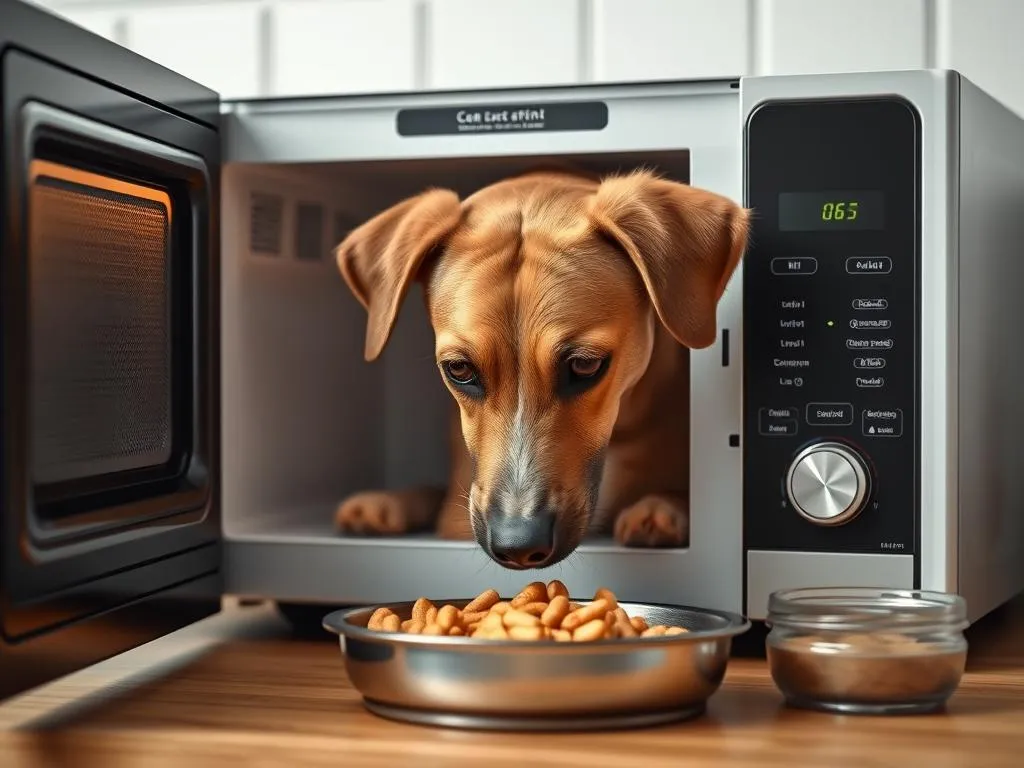
Dog nutrition is a crucial aspect of pet ownership that affects a dog’s overall health, energy levels, and longevity. Just like humans, dogs require a balanced diet to thrive, which includes a variety of essential nutrients. Understanding your dog’s dietary needs is fundamental in maintaining their health and happiness. A common question among dog owners is, can you microwave dog food? This article will address that inquiry along with various other essential components of dog nutrition.
Understanding Dog Nutrition
Nutritional Requirements for Dogs
Dogs need a mix of nutrients to maintain optimal health. These nutrients include:
- Proteins: Essential for growth, repair, and overall health. High-quality protein sources include chicken, fish, and beef.
- Fats: Provide energy and help absorb certain vitamins. Healthy fats such as omega-3 and omega-6 fatty acids are vital for skin and coat health.
- Carbohydrates: Offer a source of energy and aid in digestive health. Whole grains, fruits, and vegetables are excellent carbohydrate sources.
- Vitamins: Important for various bodily functions. Vitamins A, D, E, and K play critical roles in health.
- Minerals: Essential for bone health, nerve function, and fluid balance. Common minerals include calcium, phosphorus, and potassium.
A balanced diet is crucial to ensure that dogs receive all these nutrients in the right proportions.
Life Stage Nutrition
Dogs’ nutritional needs vary significantly based on age, size, and breed. Puppies require a diet rich in protein and fat to support their rapid growth and energy levels. Adult dogs need a balanced diet to maintain their health, while senior dogs often benefit from lower-calorie diets with added joint support supplements.
Different breeds and sizes also have specific dietary requirements. For instance, large breeds might need food formulated to support joint health, while small breeds may require higher fat content due to their faster metabolism.
Types of Dog Food
Commercial Dog Food
Commercial dog food comes in three primary forms: dry, wet, and semi-moist.
- Dry Food (Kibble): Convenient and cost-effective, dry food helps maintain dental health through the crunching action.
- Wet Food: Often more palatable, wet food provides added moisture, which can be beneficial for hydration.
- Semi-Moist Food: This type offers convenience similar to dry food while being softer and more appealing to some dogs.
Each type has its pros and cons. For example, while dry food is easier to store, wet food may be more appealing to picky eaters.
Homemade Dog Food
Preparing dog food at home has gained popularity among pet owners who want to control their dog’s ingredients. Benefits include knowing exactly what your dog is consuming and the ability to customize meals to meet specific dietary needs.
When making homemade dog food, include high-quality proteins, vegetables, and healthy fats. However, avoid ingredients like onions, garlic, chocolate, and grapes, which can be toxic to dogs.
Raw Diets
The raw feeding movement advocates for feeding dogs raw meat, bones, and some fruits and vegetables. Proponents argue that this diet mimics what dogs would eat in the wild. However, raw diets require careful planning to ensure nutritional adequacy and to avoid foodborne illnesses.
Safety concerns include the risk of bacterial contamination and the need for a balanced diet. It’s essential to consult with a veterinarian before switching to a raw diet.
Preparing Dog Food
Cooking Methods
When preparing dog food, several safe cooking methods can be utilized. These include:
- Steaming: A gentle method that helps retain nutrients.
- Boiling: Effective for cooking meats and vegetables thoroughly.
- Baking: Ideal for creating treats or biscuits.
- Raw Preparation: Requires careful handling to ensure food safety.
Can You Microwave Dog Food?
A frequently asked question is, can you microwave dog food? Yes, you can microwave dog food, but there are some safety considerations to keep in mind.
Safety Considerations When Microwaving
When warming dog food in the microwave, ensure it is safe for consumption. Microwaving can create hot spots in the food, which could burn your dog’s mouth. Always stir the food well after microwaving and let it cool to a safe temperature before serving.
Pros and Cons of Microwaving Dog Food
Pros:
– Quick Heating: Microwaving is a fast way to warm up meals, especially convenient for busy pet owners.
– Enhanced Aroma: Warming food can enhance its smell, making it more appealing to your dog.
Cons:
– Hot Spots: Uneven heating can lead to hot spots that could harm your dog.
– Nutrient Loss: Excessive heating can sometimes diminish the nutritional value of the food.
Best Practices for Microwaving Dog Food
To microwave dog food safely, follow these best practices:
- Use a microwave-safe container.
- Heat in short intervals (15–30 seconds) and stir between each.
- Always check the temperature before serving to avoid burns.
Feeding Guidelines
Portion Control
Determining the right portion size is critical for maintaining your dog’s health. Factors to consider include:
- Size: Larger dogs typically require larger servings.
- Activity Level: Active dogs may need more calories compared to less active ones.
- Weight Goals: Adjust portions accordingly if your dog is overweight or underweight.
Feeding Frequency
Feeding schedules can vary based on the dog’s life stage:
- Puppies: Typically require three to four meals a day.
- Adults: Generally do well with two meals a day.
- Seniors: May benefit from smaller, more frequent meals.
Transitioning between feeding methods should be done gradually to prevent digestive upset.
Common Dog Food Myths
Misconceptions About Nutrition
There are several misconceptions about dog nutrition that can mislead pet owners:
- Dogs Are Carnivores: While dogs are primarily carnivorous, they are omnivores and can benefit from a variety of foods, including grains and vegetables.
- Grains Are Harmful: Many dogs can digest grains without issues. In fact, whole grains can provide valuable nutrients and fiber.
Misunderstanding Dog Food Labels
Reading dog food labels can be confusing. Look for the Association of American Feed Control Officials (AAFCO) statement on the bag, which indicates that the food meets certain nutritional standards. Ingredients should be listed in order of weight, so the first few ingredients are the most significant.
Health Issues Related to Poor Nutrition
Obesity in Dogs
Obesity is a growing concern among pets. Overfeeding, lack of exercise, and high-calorie treats contribute to this condition. Being overweight can lead to various health issues, including diabetes, joint problems, and heart disease.
Allergies and Intolerances
Food allergies are relatively common in dogs. Common allergens include beef, chicken, dairy, and wheat. Symptoms may include itching, gastrointestinal issues, and skin problems. If you suspect your dog has a food allergy, consult your veterinarian for guidance on an elimination diet.
Nutritional Deficiencies
Signs of malnourishment can include lethargy, poor coat condition, and weight loss. Nutritional deficiencies may arise from an unbalanced diet or if homemade food lacks essential nutrients. Regular veterinary check-ups can help identify and address these issues.
Conclusion
Proper dog nutrition is essential for the health and well-being of your canine companion. From understanding their dietary needs to exploring various food types and preparation methods, it’s important to make informed choices. As we’ve discussed, the answer to can you microwave dog food is yes, but it should be done with care to avoid any risks.
Always remember to consult with a veterinarian for personalized dietary advice tailored to your dog’s unique needs. With the right approach to nutrition, you can ensure your furry friend leads a healthy, happy life.









